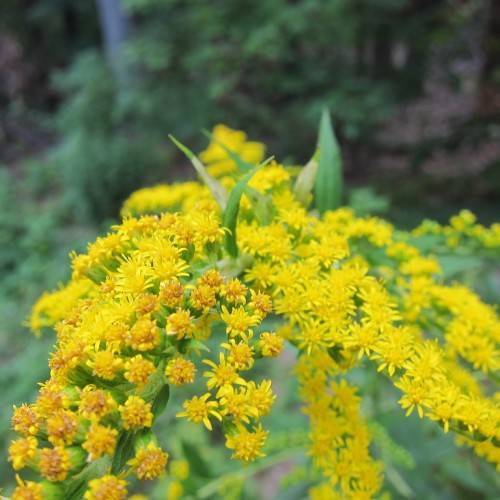
early goldenrod
Solidago juncea
Cycle:
Herbaceous Perennial
Watering:
Minimum
Hardiness Zone:
3 - 8
Flowers:
Flowers
Sun:
Full sun
Soil:
Sandy Loamy Clay Rocky
Leaf:
Yes
Growth Rate:
Low
Maintenance:
Low
Salt Tolerant:
Yes
Invasive:
Yes
Care Level:
Low
watering
Early goldenrod (Solidago juncea) benefits from regular watering. Water once a week or when the top inch of soil starts to feel dry. Water the soil slowly at the base of the plant, and keep the foliage dry in order to prevent fungal disease. Too much water can cause the plant to become overwatered and this can stunt its growth. In general, it is recommended to avoid prolonged periods of drought stress, and to water the plant deeply at least once a week or when the top inch of soil feels dry to the touch.
sunlight
Early goldenrod (Solidago juncea) is a light-loving plant that requires between 5 and 8 hours of direct sunlight per day to thrive. While it can tolerate partial shade, this perennial plant prefers full sun exposure. There is some variation in the amount and intensity of sun needed depending on the amount of space in the garden. In shadier areas, early goldenrod may require 6 to 8 hours of direct sunlight to meet its needs; in more open, sunny areas, 5 to 6 hours should suffice. Early morning and late afternoon sun are sufficient for this species, while direct midday sunlight should be avoided.
pruning
Early goldenrod should be pruned in late winter or early spring, before new growth begins, in order to restrict its size and maintain its shape. Pruning can involve removing up to 1-third of the plant’s older, overgrown stems, thinning out densely packed stems, deadheading flowers, and cutting back flowering stems to encourage new growth. It is also recommended that you remove any dead or diseased growths to keep the plant healthy. Ensure that you are using clean, sharp bypass pruners to minimize damage to the stem. Finally, clean the pruning tools with rubbing alcohol or a 10% bleach solution before and after pruning to prevent the spread of any diseases.
